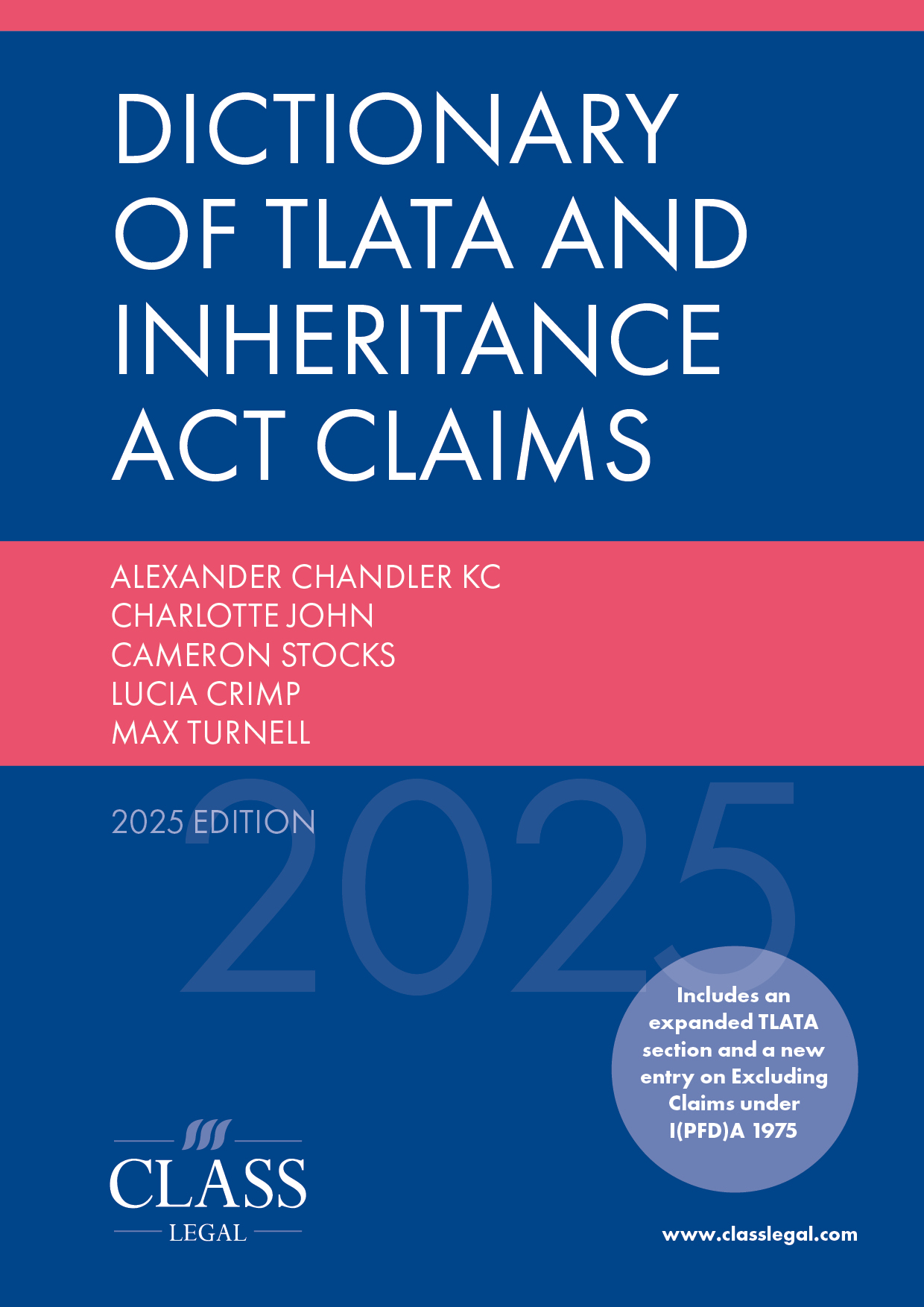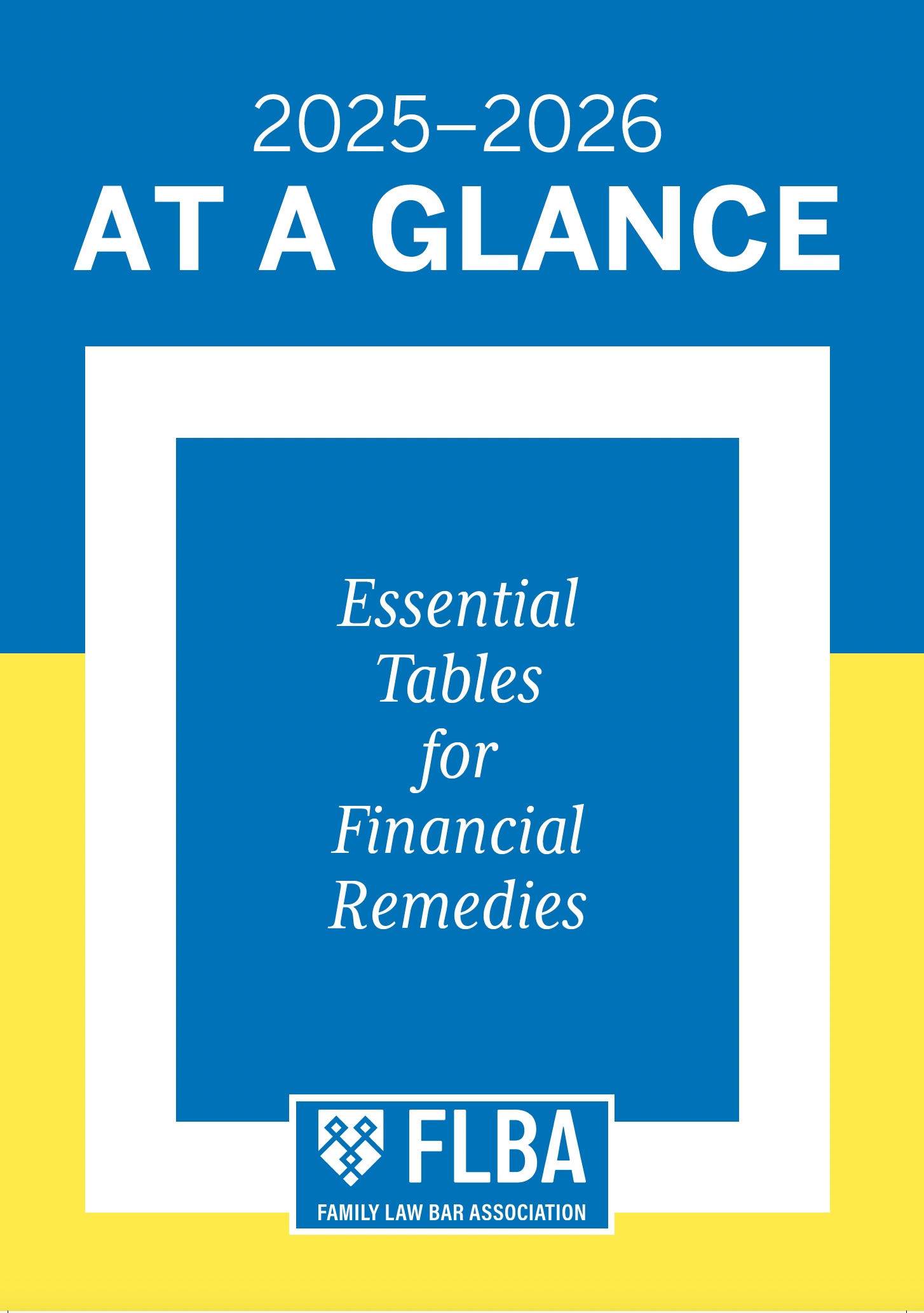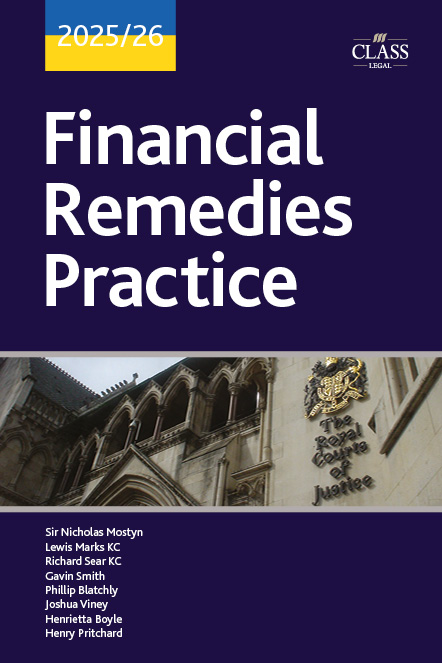
Financial Remedy Reform – ‘Fairness’ – Do Divorcing Parties Get Any Say – Time for Some Soul Searching for Family Law Professionals
Published: 30/06/2025 06:58

The Law Commission Scoping Report
The Law Commission’s 373-page scoping report on Financial Remedies on Divorce and Dissolution, which was published just before Christmas 2024, stated categorically (emboldened emphasis):
‘1.58 In our view, the current law relating to financial remedies on divorce and dissolution does not, to use the words of the question set out in our Terms of Reference, “provide a cohesive framework in which parties to a divorce or dissolution can expect fair and sufficiently certain outcomes.’
The Report again highlighted (para 1.14) the uncompromising fact from data drawn from the Family Court Statistics Quarterly (2024) that of 112,135 divorces/ dissolutions commenced in 2023 only in some 40% (i.e. 44,564) of these were applications made for a court order. That same 40% figure included those applications made for an order where the parties had reached a homemade compromise over their finances with little or no separate legal advice. Indeed, only 11.5% of all divorcees in 2023 actually contested their financial division arrangements before the court. A similar number, namely 11% of divorcing couples, made any provision in their settlements for the division between themselves of existing but as yet undrawn pensions (see para 10.3 of the Report).
The Report throughout catalogues multiple existing issues being experienced with both the principles applied under what is known as the ‘statutory exercise’ of the Matrimonial Causes Act 1973 and the related court practice and procedures as drawn from the Commission’s consultation with judges, academics, practitioners, receipt of voluntary submissions and selected published legal commentary and data.
Reform delay
In fact, this most recent Law Commission publication is the latest development in a quite extraordinary institutional delay in tackling a known area of required law reform at the very heart of family relationships, which was first acknowledged as long ago as 2009 when the Law Commission first commenced a project to examine the status and enforceability of marital property agreements and then in 2012 extended their remit to cover the clarification of financial needs and non-matrimonial property. Despite the Commission’s subsequent full report in 2014 together with draft legislation (relating to the introduction of ‘qualifying nuptial agreements’) and recommendations for further clarification of the law for the benefit of both litigants and professionals engaged in this area of divorce resource distribution, there followed a woeful dearth of governmental activity, which ran parallel with similar lack of action in the field of family law relating to both the Law Commission’s reports on Cohabitation (2007) and Enforcement of Family Financial Orders (2016).
Subsequent Private Members Bills in Parliament related to the same area of financial remedies provision upon divorce and introduced from 2018 onwards, first by Baroness Deech and then restarted by Baroness Shackleton, have ultimately been held in the long stay legislative car park known as ‘the committee stage’ with most recently a six-month promise of the current Labour government to respond to the scoping report’s latest recommendations.
Models for reform
It should be noted that to date the Commission’s report analysis, as above, of the current fitness for purpose of divorce financial remedies provision has not yet formally engaged any public consultation, having been primarily focused upon the views only of the judiciary and engaged professionals and academics. An approach which, it has to be said, can only be perceived by others as most likely to result in suggested solutions for reform which are inward rather than outward looking as well as over lawyer protective.
This is a highly regrettable set of circumstances with no imminent prospect of radical reform yet in view. The Commission’s own suggestions for reform canvassed four potential models of approach, being:
- the Codification of the existing current principles and law; or
- a Codification-Plus approach effecting some additional reform, including checks to the current system; or
- a Guided Discretion reform which would introduce a set of statutory foundation principles and objectives beyond those to be derived from the **s 25** exercise; or
- the adoption of a Default Matrimonial Property Regime reflective of other jurisdictions setting out by statute in advance how parties’ property would be divided upon divorce with the courts having little discretion to make any adjustment.
Once the Government responds, there is presently no guarantee it will accept any of the four canvassed routes above and, even if it does, there would clearly be a need for further extensive public consultation thereafter before primary legislation appears. Indeed, both the Codification and Codification-plus options (models i and ii above) have little realistic prospect of addressing the reasons for the current lack of engagement with the legal process involved. Complexity of applicable principles, lack of clear predictive final outcome in a system based on wide judicial discretion and related excessive cost and delay are all well-rehearsed features of the present failing system and, whilst statutory codification may better identify the purpose and number of factors involved in the ‘statutory exercise’, it promises to do little to mitigate these featured concerns or, more importantly, draw the majority back into the court process – indeed, it may instead only serve to entrench the same alienation of those it is supposed to serve.
Impact of alternative resolution
In recent years the promotion of alternative dispute resolution has substantially mitigated what would otherwise by now have developed into an overwhelming crisis in an overburdened and underfunded court system still playing catch up with the effects of the covid pandemic and even earlier governmental neglect. Yet even with alternative dispute resolution and, particularly, the option of Private FDR evaluation, it should be observed that its impact is dependent upon those parties who can afford it deciding to commit to such early extra funding in an already over-expensive end of marriage process.
Of course, it is not without significance that the national take-up of the Private FDR route is thought to be highest in those areas of London and the south-east where the court list delay is at its longest. This is hardly reflective of divorcees viewing this alternative resolution course of action as their true first choice whatever hype is provided of its merits by the professions or government agency. It is surely not unreasonable for the taxpayer of any jurisdiction to expect the established court system to primarily and effectively deal with disputes arising between divorcing couples when initial mediation has failed without further bolted-on costs having to be borne before embarking upon the court process itself.
In addition, divorcing couples may be forgiven for believing, in the current climate of adverse costs orders and increasing pressure to avoid the court process at all, that somehow a family court system designed to be there to resolve their disputes now regards their attempt at litigation as tantamount to an abusive activity and its failings as their fault.
The Private FDR
Is it not also possible that the recent drive to engage in the Private FDR overlooks the fact that the evaluator is often now a legal practitioner, who also has a separate legal practice in the same locality and may well otherwise regularly accept in other cases his or her own private instruction as counsel for one of the professional clients engaged in the Private FDR hearing? Should the fact that the parties to such a hearing have agreed to this form of alternative resolution in such circumstances thereby make this arrangement professionally acceptable? How many lay clients will have been in practice made aware of this situation and, if so, what have been the decisive factors to nevertheless proceed and have such factors on one side or the other, whether openly or otherwise, been evaluated to show whether the track history of the evaluator concerned is the more likely to favour that party’s case?
These are issues which gain even more importance when the parties having committed to paying the extra cost of the Private FDR evaluator in place of a court hearing, which the state has hitherto accepted as its responsibility to provide, will then at such a Private FDR, by reason of such additional cost experience, be under a greater pressure to reach some sort of compromise aided by an evaluator, who in most cases as a legal professional still in practice will not be subject to the judicial oath as an appointed court judge would be. Such pressure on the lay client in such circumstances is not to be underestimated and experience teaches that real issues, particularly of conduct, are not infrequently laid to rest on the altar of getting the case ‘done and dusted’ at this early stage, whatever the true merits may have been had the more vulnerable party resisted the chorus of Private FDR hearing reminders about future adverse costs should they continue.
Of course, it will be said that this fails to take account of the fact that once a Private FDR evaluation reaches a settlement the same still must receive the approval of a court final order before being binding. However, the likelihood of a subsequent disapproval by a court of a Private FDR settlement distinctly remains remote in reality.
With respect to the many legal practitioners who do their best to advise their clients with the highest of integrity upon the factors and principles at play, long experience of a court-led FDR and more recently Private FDR hearings gives rise to concern that most settlements, in the author’s experience, are reached somewhere at or near the middle of each party’s presented positions, which then enable those taking part to self-justify the exercise as having been worthwhile when set against the delay and uncertainty of continuing to a final court judgment. Yet the question should arise as to whether such compromises as are reached would be as justifiable if the court process thereby avoided was less delayed and more certain in the application of its principles and less likely to be punishing of one or both parties in costs for failing to engage in an earlier compromise at its conclusion. Should there not be concern to get right the justice balance of the law and procedure at play rather than prioritising the expediency of avoiding the process it engages?
Public consultation
It is in these contexts that the current absence of public consultation within the scoping report regarding the type and shape of law reform in relation to such an important area as the end of a marriage and the fair approach to dividing the parties’ resources becomes all the more fundamental. Yes, the divorce distribution process should be based upon principles of fairness, but it is not just fairness as seen through the eyes of the wealthy litigant in relation to whom, notoriously, most of our existing financial remedy principles have been honed. Indeed, the Commission’s scoping report has again highlighted that the median total property values (including pension and less debts) of divorcing couples on latest published figures is just £135k (see Nuffield Trust, Fair Shares report (2023) – in fact, almost one fifth of these couples had no assets at all to divide).
Most divorce distribution cases are about ‘needs’ within which to a divorcing party loom large the real costs of first taking legal advice and then the risk of more costs by embarking upon financial remedy litigation when case law since 2000 (White) now appears to justify an array of arguable stances as exceptions to equality of division. To such a divorcee litigant there will be real traction in an assessment of what is fair engaging the need also for certainty of approach at the very outset of the divorce resource distribution journey and some high degree of standardisation of its predictable outcome. Such a divorce litigant may well be prepared to accept that a detailed analysis of his or her particular financial position and a judge’s freedom of discretion to reach a bespoke outcome of fairness thereon, as currently, is simply no longer workable or reasonably affordable – indeed, the statistics rehearsed above appear loudly to shout out such a conclusion.
By contrast, however, at the time of writing, there is much anticipation within the ranks of financial remedy practitioners, judges and academics alike of the Supreme Court’s awaited ruling in the appeal of Standish v Standish as to the meaning and importance within the ‘statutory exercise’ of yet another principle not even mentioned in s 25, namely ‘matrimonialisation’. Perhaps this, overall, reflects the central problem, namely, the apparent ever-increasing distance between what family law professionals consider the shape of the process required to produce fairness should look like within the ‘statutory exercise’, given their vested interests in ensuring they should be part of the process which provides it, and what divorcing parties would, if they had an effective say in its formation, envisage as the acceptable model of any reform given that it is they who have in every sense to pay for it.
In conclusion
The facts as set out in the Law Commission’s extensive scoping report speak for themselves – our financial remedy law and procedures are patently no longer serving the majority of divorcees. Period. Yet it appears that because the provision of legal services has become more big business than a vocation, whilst the product being supplied is failing, the emphasis for family lawyers in this area of the law appears to be on more legal award ceremonies, more back slapping and posing for photograph opportunities with champagne than it is on urgently endeavouring to address this position.









